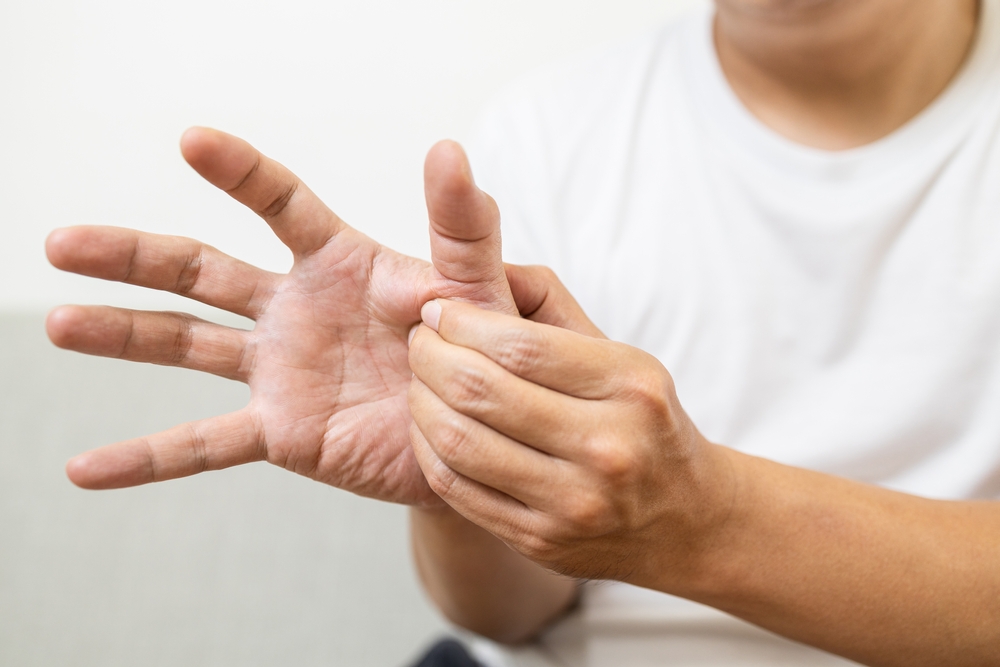A Guide to Hand Arthritis: Recognizing Signs and Managing Symptoms
Hand arthritis is a common condition that affects millions of people worldwide, causing pain, stiffness, and reduced functionality in the hands and fingers. Understanding the early signs, types, and treatment options for hand arthritis is crucial for managing symptoms and maintaining quality of life. This comprehensive guide will explore the various aspects of hand arthritis, from recognizing initial symptoms to exploring effective treatment strategies and lifestyle modifications.

What are the early signs of hand arthritis?
Recognizing the early signs of hand arthritis is essential for timely intervention and management. Common early symptoms include:
-
Joint pain: Discomfort or aching in the joints of the fingers, thumbs, or wrists, especially during or after use.
-
Stiffness: Difficulty moving the fingers or hands, particularly in the morning or after periods of inactivity.
-
Swelling: Noticeable puffiness or enlargement around the affected joints.
-
Weakness: Reduced grip strength or difficulty performing everyday tasks like opening jars or turning doorknobs.
-
Changes in joint appearance: Visible lumps, bumps, or deformities in the finger joints.
If you experience persistent symptoms, it’s important to consult a healthcare professional for proper diagnosis and treatment.
What are the different types of hand arthritis?
Understanding the various types of hand arthritis can help in determining the most appropriate treatment approach. The two main types affecting the hands are:
-
Osteoarthritis (OA): The most common form of arthritis, OA occurs when the protective cartilage in joints wears down over time. It typically affects the joints at the base of the thumb, fingertips, and middle joints of the fingers.
-
Rheumatoid Arthritis (RA): An autoimmune disorder that causes inflammation in the joint lining, RA often affects the small joints of the hands and wrists symmetrically. It can lead to more severe joint damage and deformity if left untreated.
Other less common types include psoriatic arthritis, which is associated with psoriasis, and gout, which can sometimes affect the hands but more commonly impacts the feet.
What treatment options are available for hand arthritis?
There are various treatment options available to manage hand arthritis symptoms and slow disease progression. These include:
-
Medications: Over-the-counter pain relievers like acetaminophen or nonsteroidal anti-inflammatory drugs (NSAIDs) can help reduce pain and inflammation. For more severe cases, prescription medications such as disease-modifying antirheumatic drugs (DMARDs) may be recommended, especially for rheumatoid arthritis.
-
Physical therapy: Targeted exercises and stretches can help maintain joint flexibility, strengthen surrounding muscles, and improve hand function.
-
Occupational therapy: Learning new ways to perform daily tasks and using adaptive devices can reduce strain on arthritic joints.
-
Hot and cold therapy: Applying heat or cold to affected joints can help alleviate pain and stiffness.
-
Splints or braces: These devices can provide support and stability to affected joints, reducing pain and preventing further damage.
-
Corticosteroid injections: In some cases, injections of corticosteroids directly into the affected joints can provide temporary relief from pain and inflammation.
-
Surgery: For severe cases that don’t respond to conservative treatments, surgical options such as joint fusion or joint replacement may be considered.
How can lifestyle changes help manage hand arthritis?
Incorporating certain lifestyle modifications can significantly improve symptoms and overall hand health:
-
Maintain a healthy weight: Excess weight can put additional stress on joints, including those in the hands.
-
Exercise regularly: Low-impact activities like swimming or cycling can help maintain overall joint health without putting excessive strain on the hands.
-
Practice joint protection techniques: Use larger joints for tasks when possible (e.g., carrying bags with your forearm instead of your fingers) and avoid activities that put excessive stress on your hands.
-
Quit smoking: Smoking can worsen arthritis symptoms and increase the risk of complications.
-
Follow an anti-inflammatory diet: Consuming foods rich in omega-3 fatty acids, antioxidants, and fiber may help reduce inflammation.
-
Manage stress: Stress can exacerbate arthritis symptoms, so incorporating stress-reduction techniques like meditation or yoga can be beneficial.
When should you see a specialist for hand arthritis?
While mild hand arthritis symptoms can often be managed with self-care and over-the-counter treatments, there are instances where consulting a specialist is necessary:
-
Persistent pain or stiffness that interferes with daily activities
-
Visible joint deformities or sudden changes in joint appearance
-
Symptoms that don’t improve with conservative treatments
-
Signs of infection, such as redness, warmth, or fever
-
Rapid or unexplained weight loss associated with joint symptoms
-
Symptoms affecting multiple joints or occurring symmetrically
A rheumatologist or orthopedic hand specialist can provide a comprehensive evaluation, accurate diagnosis, and tailored treatment plan to manage your hand arthritis effectively.
Hand arthritis, while challenging, can be effectively managed with proper care and treatment. By recognizing early signs, understanding the different types, exploring various treatment options, making lifestyle changes, and knowing when to seek specialist care, individuals with hand arthritis can maintain hand function and improve their quality of life.
This article is for informational purposes only and should not be considered medical advice. Please consult a qualified healthcare professional for personalized guidance and treatment.




